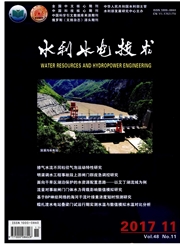

 中文摘要:
中文摘要:
暴雨径流管理模型(SWMM)已成为目前在城市排水管网设计、城市雨洪模拟、城市水污染模拟及城市低影响开发(low impact development,LID)模拟等方面研究与应用中使用最为广泛的一款模型。剖析SWMM的基本原理,分析其研究现状,展望其发展前景,深入分析SWMM的产流、汇流、管网水动力学模拟、水质模拟等模型机理。基于文献调研和系统分析指出,SWMM的优点是具有较完备的管网水流、LID和水质模拟功能,软件界面友好易于操作,模型开源易于实现二次开发;缺点是未实现立体化水流模拟,未实现与GIS紧密耦合,地表产流模拟过于简化,无法模拟地表二维淹没和城市社会水循环;未来应针对其不足改进和完善相关模块,拓展其应用领域。研究成果有助于不同学科与行业的研究者更加全面地认识和理解SWMM,为SWMM的研究及在海绵城市建设中的运用提供了科学参考。
 英文摘要:
英文摘要:
Under the upsurge of the sponge city construction,SWMM( the storm water management model) becomes a model widely used in the aspects of the design of urban drainage network,simulation of urban storm water,simulation of urban water pollution,simulation of urban low impact development( LID) concept,etc. at present. The basic principle of SWMM is deeply interpreted herein and its development in the days to come is analyzed,so as to provide a systematical cognition for fully understanding the simulations made with SWMM on runoff yield,confluence,hydrodynamics of drainage network,etc. Based on the relevant literature investigation and systematical analysis,the merits of SWMM are pointed out,i. e. more perfect functions of the simulations on drainage network,LID and water quality; friendly interface and easy to operate; modeling open source is prone to realize the secondary development; while its defects are that the 3-D flow simulation and closely coupling with GIS are not realized and the simulation on the surface runoff yield is too simple to simulate the 2-D surface submergence and the urban hydrosocial-cycle,thus the relevant modules must be modified and improved for its defects in the future,so as to expand its application field. The study result is helpful for the researchers fromdifferent specialities and professions to fully cognize and understand SWMM,and then provides a scientific reference for the study on SWMM and its application to the sponge city construction.
 同期刊论文项目
同期刊论文项目
 同项目期刊论文
同项目期刊论文
 期刊信息
期刊信息
